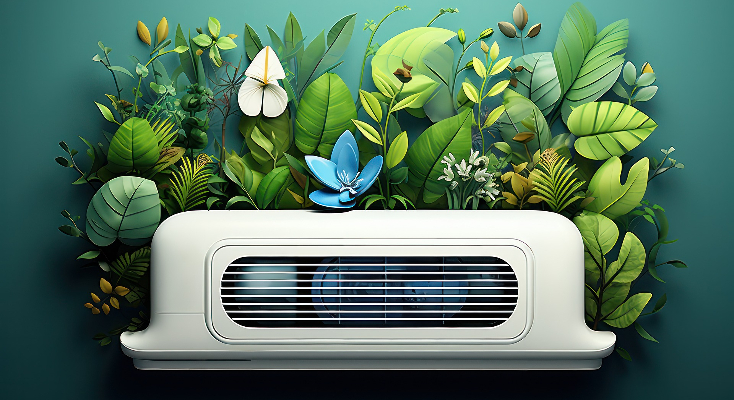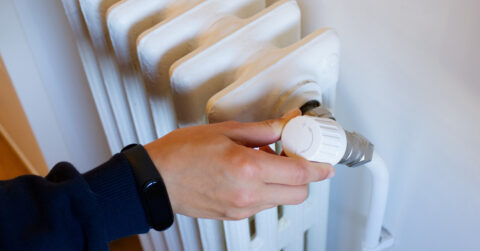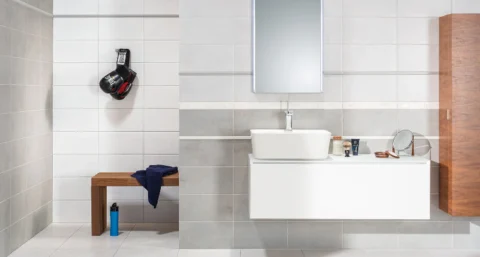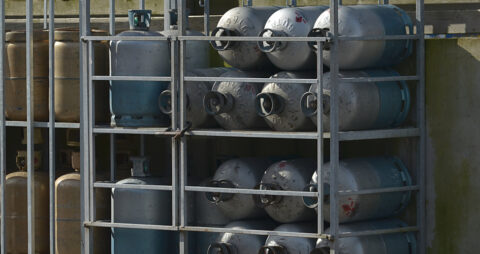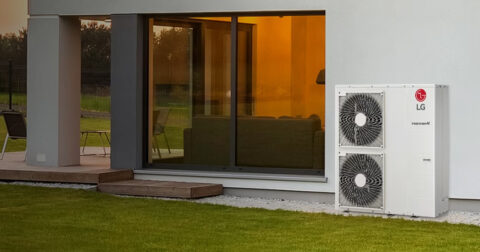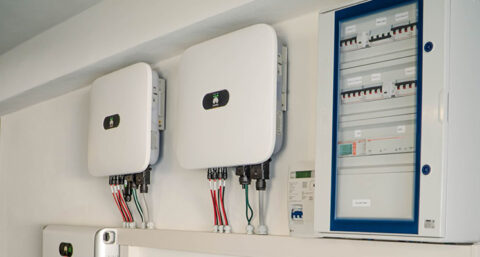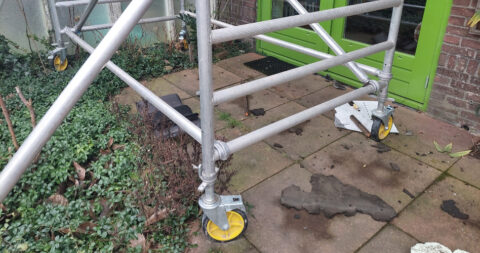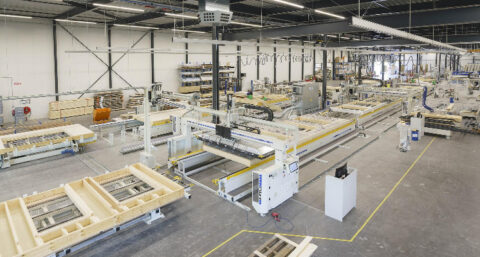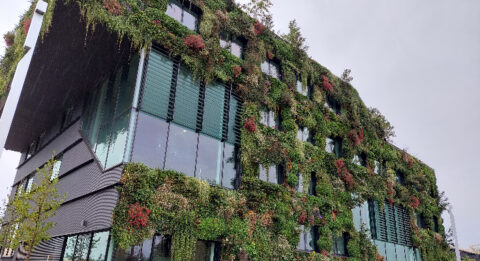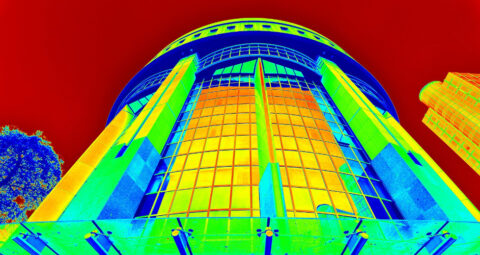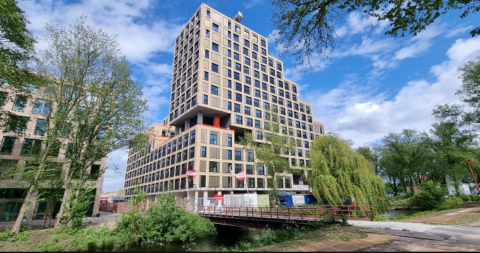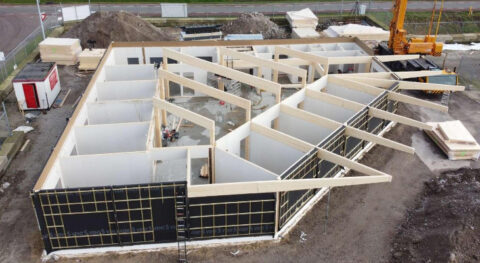From building biology, 25 guidelines have been established as a starting point for a healthy, natural, sustainable and beautiful living environment. These guidelines are divided into five main themes: indoor climate, building materials and furnishings, design and architecture, environment/energy/water, and eco-social living environment. Building biologist Nathalie Groot Kormelink explains the main theme of indoor climate.
'The first main topic 'indoor climate' is an important but also complex core subject of building biology,' says Groot Kormelink, building biologist, architect and founder of architecture firm Sparc in Enschede. 'It consists of the four components: air, temperature, humidity and electroclimate, and these four influence each other in many ways. In addition, the components are in turn influenced by (building) materials, construction type and type and degree of insulation.'
Synthetic fabrics
Each component has its own unique set of properties. 'Take air, for example,' says Groot Kormelink. 'You can look at its composition, substances/gases or perhaps mold present, odor, air flows, ventilation, air pressure. The Longfonds and Milieu Centraal both indicate that the indoor climate in Dutch homes is generally not great. And that while we spend the vast majority of the day, often as much as 20 to 22 hours, inside.'
That indoor climate is of poor to moderate quality has its origins, in part, in the introduction of tens of thousands of synthetic fabrics since the middle of the last century. Think paint or textiles. Materials are also subjected to all sorts of processes to make them stronger, make them fire-resistant, make them shiny or sticky, or you name it. 'A well-known example is formaldehyde, admittedly a naturally occurring gas, but when incorporated into the glue of particle board and in dozens of other products, it is proven harmful to humans. Ikea has therefore now begun to reduce formaldehyde emissions and switch to natural binders in its wooden products.'
Airtight construction
Increasingly airtight construction is also causing poorer air. 'Natural ventilation as it used to be very common has been replaced by mechanical ventilation in new buildings,' says Groot Kormelink. 'Ventilation is important to get oxygen into the house, but also to remove harmful substances such as carbon monoxide and CO₂ and moisture. An average family produces about ten liters of moisture a day by showering, cooking, and just breathing. That has to go somewhere, of course. Mechanical ventilation with heat recovery, preferably equipped with CO₂ sensors, is a good solution.'
CO₂ is a typical indicator gas. If its percentage in the air is high, other pollutants will also score higher. According to the Building Code, in a 12m2 bedroom where two people sleep, it is necessary to ventilate 38,000 liters per hour. 'According to Building Biology, it should be at least 60,000 liters per hour. If you also happen to regularly ride an exercise bike in that room, that number is even higher. Corona did give the subject of ventilation a boost.'
Air conditioning has become indispensable, especially in utilities. Fine, thinks Groot Kormelink. 'If it is installed properly and if it is maintained properly. As a building biologist, I am of the opinion that air conditioning in residential buildings is not necessary. But then the design of the house should include passive ventilation at night, good insulation against summer heat, and east, south and west windows with exterior blinds. That way you keep the heat out, and if the house does heat up a bit, it can be cooled at night with passive night ventilation.'
Temperature
Keeping a home at one temperature is not a good idea, according to building biology. Groot Kormelink explains: "Your body is built to adapt to different temperatures, it can restore and strengthen the immune system. In nature there are big differences right next to each other, such as in sun or shade, with or without wind, on stone or wooden floors. People who live in a Passive House, where the temperature is constant throughout the house, are advised to go outside a little more often, for good reason.
'Temperature, by the way, is quite a subjective concept,' she continues. 'It can be measured, of course, but not everyone experiences it the same. One person likes to stay in a room of 22 degrees, someone else likes 19 degrees. Also whether you sit still or move makes a difference.'
About what is unpleasant, people are more likely to agree. Cold traps, for example. When the temperature of the walls and floors in a home differ too much from the indoor air temperature, air currents occur. 'You actually have to make sure that the difference between wall and floor and from the indoor air temperature, is no more than two degrees less or five degrees more (measured 10 cm away from the wall or floor). Higher than that and air currents are perceived as unpleasant.'
Temperature includes heating. Groot Kormelink: 'Radiant heat fits well within the philosophy of building biology because it is most similar to the heat of the sun. This can be installed as wall or floor or even ceiling heating, but infrared panels and a wood stove also emit radiant heat. Building biology-wise, a wood stove is not a good alternative because of particulate emissions, but it is radiant heat.'
Humidity and electrostatic charge
From a medical perspective, a relative humidity of about 45-50% is often described as optimal at ordinary indoor air temperatures. In winter, it is often difficult to achieve that percentage because a heating system extracts moisture from the air. 'The disadvantage of dry air is that dust develops more easily and electrostatic charge builds up. Electrostatic charge in turn attracts dust, and on dust viruses can easily attach themselves. Too much humidity is not good either, by the way, because it increases the chances of mold, condensation and other moisture problems.'
Healthy Housing Certification
Humans have been walking the earth for two million years, but we have only come into large-scale contact with synthetic substances since 1950. 'How they hold up over time and what effects they have in the long term, we don't yet know exactly,' says Groot Kormelink. 'It has long been known that many things are not good for your health, but it often takes years for legislation to change. Just look at asbestos, turpentine-based paint and you name it. Waiting for legislation is an option, but of course everyone can make their own sustainable and healthy choices. Fortunately, good initiatives can be found in the construction industry. For example, the Gezonde Woning Keur quality mark was recently created. Air quality, for example, is specifically included, as are all kinds of other themes that together demonstrate that a home is healthy. The first hallmark was awarded to Trebbe for the development and realization of Newtonpark in my home town of Enschede. How wonderful that is!
